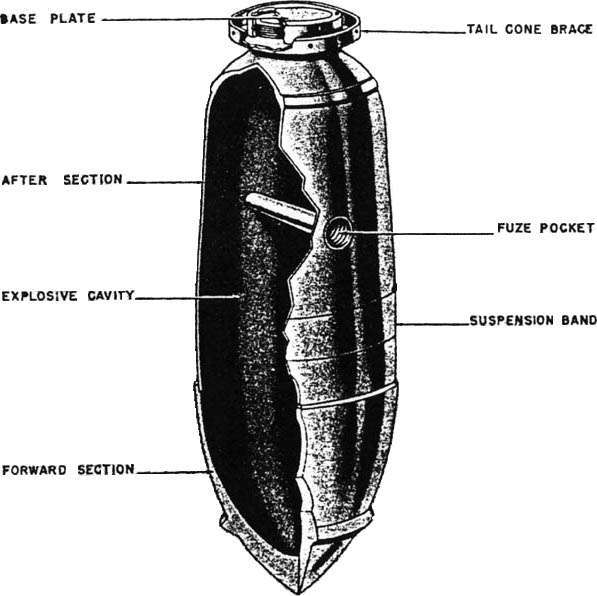Following reports over the weekend about a large item of Unexploded Ordnance (UXO) being unearthed by construction workers at a project in Exeter, this incident has again highlighted the importance of taking the correct safety precautions, risk assessments and mitigation measures before starting ground investigation works.
What happened in Exeter?
Army bomb disposal experts and emergency response personnel were called following the discovery of a 1,000kg WWII German Bomb on Glenthorne Road, next to a care home and University of Exeter student accommodation, on Friday 26th February.
By midday, residents from around 2,600 properties in the area, including 1,400 university students, had been evacuated while the device was inspected and assessed.
Over 400 tonnes of sand were transported to the site to help limit the impact of the disposal, and walls were erected by Royal Navy bomb disposal experts and army personnel from the Royal Logistic Corps.
The bomb was destroyed in situ in a planned operation at 6:10pm on Saturday 27th February. Police described the blast leaving a crater ‘about the size of a double decker bus’, and reports of large pieces of metal and debris hitting buildings up to 250m away – and some buildings within the 100m exclusion zone also sustained some ‘structural damage’.
A spokesperson for Devon and Cornwall police said: “Around 400 tonnes of sand was transported to the site of the device, which is at a building site on private land, and walls were erected, initially by the Royal Navy bomb disposal experts, followed by army personnel from the Royal Logistics Corps, to mitigate the impact of the detonation. Trenches were also dug to prevent ground shock.”
“Despite these mitigation measures, the impact of the blast has been significant and debris has been thrown at least 250 metres away. The crater is around the size of a double decker bus.”
Click on the following link to see a video of the bomb being detonated in Exeter – video credit: The Guardian News
History of WWII bombing in Exeter
The Luftwaffe’s main objective for attacks on Britain was to inhibit the country’s economic and military capability.
To achieve this they targeted airfields, depots, docks, warehouses, wharves, railway lines, factories, and power stations. As the war progressed the Luftwaffe bombing campaign expanded to include bombing of civilian areas in an attempt to subvert public morale.
The County Borough of Exeter sustained an overall moderate density of bombing, as represented by Home Office bomb density figures (over 300 high explosive bombs were recorded on the city).
The vast majority of bombing that Exeter was subject to in WWII came during the spring of 1942 during the so-called Baedeker Raids which were launched by the Luftwaffe in retaliation for the RAF bombing the historic German city of Lubeck.
Various cities of architectural or historic importance in the UK were targeted, such as Canterbury, York and Norwich, and Exeter was the first city to be bombed during the Baedeker Raids on 25th – 26th April 1942, in which 80 people were killed.
The damage caused by these air-raids were sizable and culminated in the largest raid on Exeter, on 4th May 1942, when over 100,000 incendiary bombs and over 75 tons of high explosive bombs fell across the city.
The 1,000kg ‘Hermann’ Bomb
During WWII, the most common high explosive bomb types included the 50kg, 250kg and 500kg, with some raids deploying even larger variants like the 1,000kg and 1,800kg bombs
The 1,000kg bomb was nicknamed the ‘Hermann’, reportedly in reference to the somewhat stocky Luftwaffe commander Hermann Göring. The common SC (or sprengbombe cylindrich) variant of the bomb was thin cased and designed for maximum blast effect – primarily used for general demolition.
The 1,000kg and 1,800kg were often deployed against the more important targets such as docks or significant industrial infrastructure, and could cause massive amounts of damage. But because of the often inaccurate nature of targeting, they often fell in the much wider area around their intended targets.
Diagram of a 1,000kg German WWII ‘Hermann’ Bomb
What was the end outcome?
Due to the unexploded bomb being detonated in-situ in a controlled explosion, there was a huge evacuation operation surrounding the immediate area – which included 2,600 properties around Glenthorne Road and 1,400 university students.
In the days following the detonation, the local area was surveyed and unfortunately – there was damage caused to surrounding buildings including the University of Exeter’s student halls of residence. This resulted in the University of Exeter temporarily rehousing students, which was incredibly distributive – not just operationally for the University but also the student’s welfare and wellbeing.
The University of Exeter made a claim under its insurance policy, which was covered by Allianz Insurance – regarding the physical damage to the halls of residence and interruption to business it caused. However, Allianz Insurance declined the claim on the basis that the damage caused fell within the scope of a ‘war exclusion clause’ – and any loss or damage caused by war would not be covered.
The University of Exeter took the decision to take legal action and their case was submitted to the High Court in January 2022, stating that the damage was caused by the deliberate act of the Royal Navy’s explosive ordnance disposal team – not by the original dropping of the bomb by the German air force in 1942.
In March 2022, the High Court ruled that Allianz Insurance was entitled to a declaration that the University of Exeter’s claim was not covered by the policy – due to the application of the war exclusion clause. The University of Exeter then took the decision to the Court of Appeal however, the Court of Appeal sided with the High Court’s original decision and as a result – they dismissed the appeal.
A spokesperson for the University of Exeter commented: “We are extremely disappointed by the outcome of the appeal hearing. The University believes this was a legitimate insurance claim for damage caused by an incident off-site and outside any control. However, we will accept the judgement.”
What is UXO Risk Mitigation?
All towns, cities and districts across the UK kept records of bomb incidents, many being held at local archives.
Maps showing viable targets, bomb damage, bomb strike locations and bomb density information provides (most but not all) the information required to help determine the possibility of encountering unexploded bombs and/or items of explosive ordnance (mortars, projectiles, grenades etc.).
This is exactly the goal of 1st Line Defence, our UXO Risk Assessments utilise all of the available historical information from external archives as well as our internal databases, library and geo-datasets, to assess how likely it is that an item of explosive ordnance might be present on a project.
Importantly, where there is a genuine concern we can recommend various UXO Risk Mitigation measures to support you, and implement them rapidly where required, and reduce the risk posed to ground workers and the general public.
How can 1st Line Defence help?
If you encounter a suspicious item on a construction site, the most important thing is not to touch it – move everyone away from the area and contact a UXO Specialist like ourselves or call the Police immediately.
1st Line Defence provide a huge range of UXO Services, if you would like more information or general advice about our UXO Risk Assessments, contact one of our Sales Team on +44 (0) 1992 245020 or email info@1stlinedefence.co.uk
Image credits: BBC News












